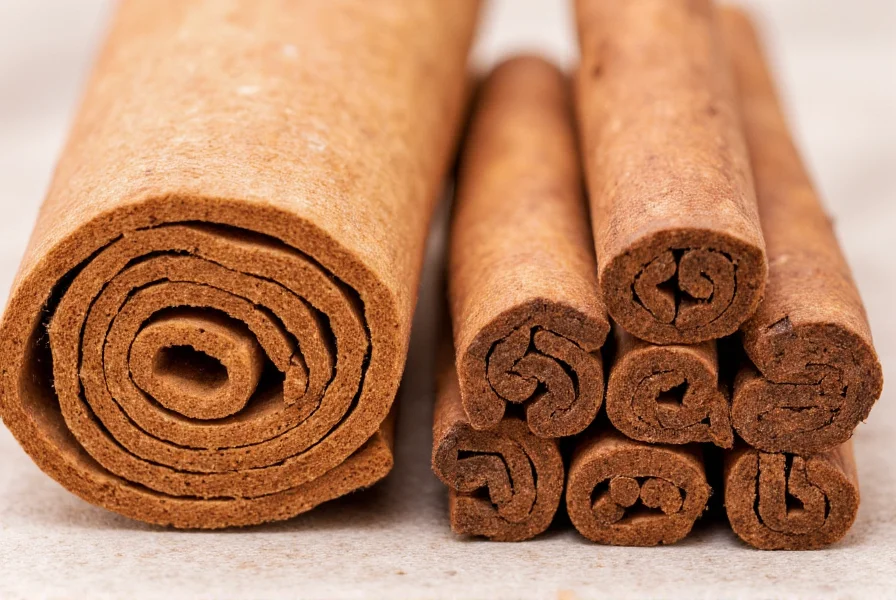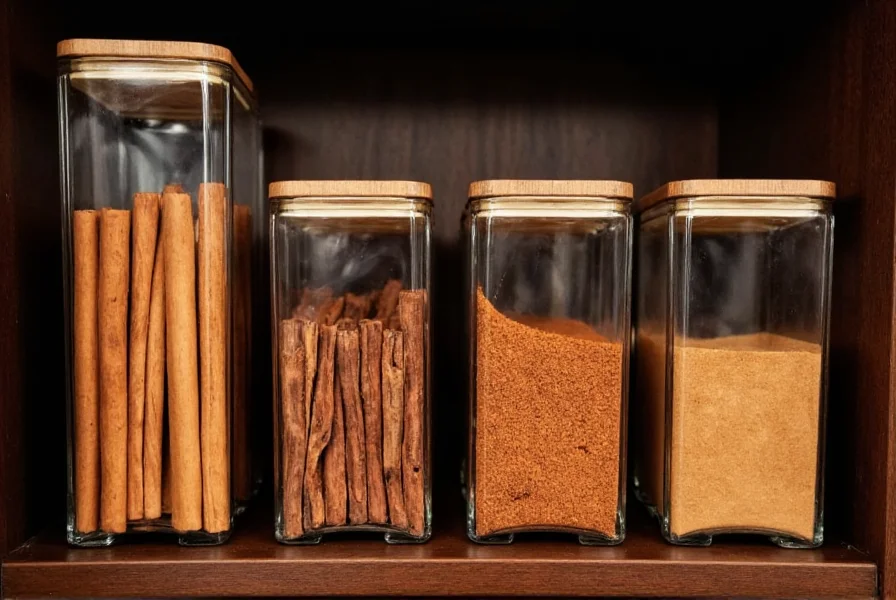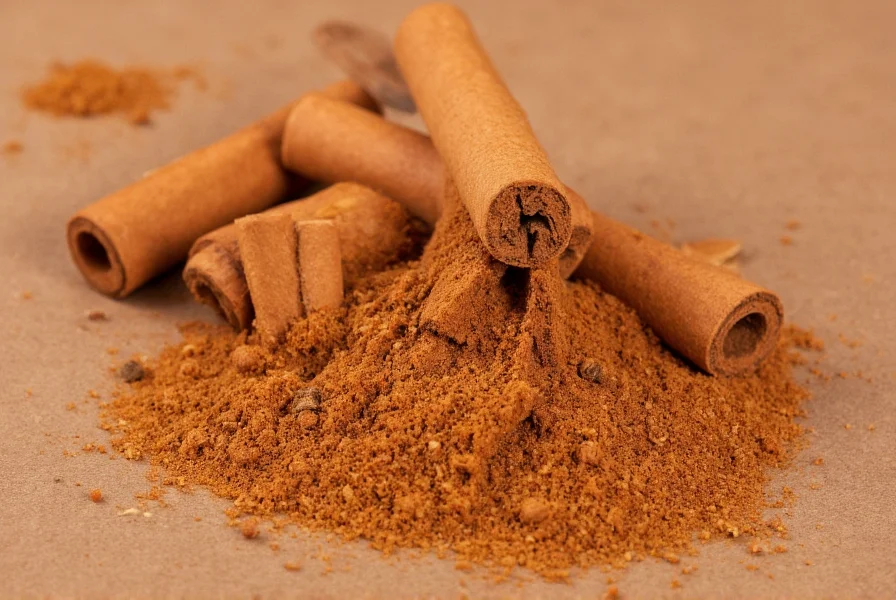Cinnamon has been treasured for thousands of years, not only as a culinary staple but also for its potential health properties. This versatile spice appears in kitchens worldwide, enhancing both sweet and savory dishes with its distinctive warm, sweet aroma. Understanding the different types of cinnamon and their appropriate uses can help you maximize flavor while making informed choices about consumption.
What Exactly Is Cinnamon?
Cinnamon comes from the inner bark of evergreen trees in the Cinnamomum family, primarily grown in Sri Lanka, China, and Indonesia. When the bark is harvested and dried, it naturally curls into the familiar quill or “stick” form. The spice contains cinnamaldehyde, the compound responsible for its characteristic flavor and aroma, along with other beneficial phytochemicals.
Historically, cinnamon was more valuable than gold in ancient Egypt and Rome. Traders guarded its origins as a closely held secret for centuries, creating elaborate myths about where this precious spice came from. Today, modern science continues to investigate the traditional medicinal uses of cinnamon, particularly regarding metabolic health and inflammation.
Understanding Cinnamon Varieties
Not all cinnamon is created equal. The marketplace offers several types, but two dominate global consumption:
| Characteristic | Ceylon Cinnamon | Cassia Cinnamon |
|---|---|---|
| Also known as | True cinnamon, Cinnamomum verum | Chinese cinnamon, Cinnamomum cassia |
| Appearance | Multiple thin, soft layers forming a delicate quill | Single thick, hard quill with rough texture |
| Color | Light tan to medium brown | Dark reddish-brown |
| Taste profile | Mild, sweet, complex with citrus notes | Strong, spicy, more intense heat |
| Coumarin content | Approximately 0.04% | Approximately 3-8% |
| Primary growing regions | Sri Lanka, Madagascar, Seychelles | China, Indonesia, Vietnam |
While Ceylon cinnamon typically commands a higher price due to more labor-intensive harvesting methods, its significantly lower coumarin content makes it the preferred choice for regular consumption. Most supermarket cinnamon in the United States and Canada is actually Cassia, often labeled simply as “cinnamon” without specification.

Nutritional Composition and Bioactive Compounds
Cinnamon's health properties stem from its rich phytochemical profile. Just one teaspoon (2.6g) of ground cinnamon contains approximately:
- 6 calories
- 2.1g carbohydrates
- 0.1g protein
- 0.1g fat
- 1.4g fiber
- Approximately 8% of the daily value for manganese
More importantly, cinnamon contains numerous bioactive compounds including cinnamaldehyde (60-90% of essential oil), eugenol, linalool, and cinnamic acid. These compounds contribute to cinnamon's potential antioxidant, anti-inflammatory, and antimicrobial properties that researchers continue to investigate.
Evidence-Based Health Considerations
Scientific research suggests several potential health benefits associated with cinnamon consumption, though important distinctions exist between varieties and dosage requirements:
Blood Sugar Regulation
Multiple studies indicate cinnamon may improve insulin sensitivity and help moderate blood glucose levels after meals. A comprehensive review published in the Journal of the Academy of Nutrition and Dietetics found that cinnamon supplementation significantly reduced fasting blood glucose levels in people with type 2 diabetes. However, the effective dose typically ranges from 1-6 grams daily, and effects appear more pronounced in those with insulin resistance.
Antioxidant Properties
Cinnamon ranks exceptionally high on the Oxygen Radical Absorbance Capacity (ORAC) scale, which measures antioxidant capacity. Its polyphenols help combat oxidative stress, potentially reducing cellular damage. Research in the journal Food Chemistry demonstrated that Ceylon cinnamon generally shows higher antioxidant activity than Cassia varieties.
Anti-Inflammatory Effects
The cinnamaldehyde in cinnamon may inhibit inflammatory pathways in the body. A study in the journal Nutrition Research found that cinnamon supplementation reduced levels of inflammatory markers like TNF-alpha and IL-6 in participants with metabolic syndrome.
It's crucial to note that while these findings are promising, most research uses concentrated extracts or relatively high doses (1-6 grams daily) that exceed typical culinary usage. Cinnamon should complement, not replace, established medical treatments for health conditions.
Culinary Applications and Pairing Suggestions
Cinnamon's versatility extends far beyond sweet applications. Understanding how to use different cinnamon varieties can elevate your cooking:
- Sweet applications: Both varieties work well in baked goods, but Ceylon's delicate flavor shines in custards, fruit compotes, and delicate pastries where you want subtle spice notes
- Savory dishes: Cassia's stronger flavor holds up better in curries, stews, and spice rubs for meats. It's essential in many Middle Eastern and North African spice blends
- Beverages: Ceylon cinnamon creates a more refined flavor in teas and hot chocolate, while Cassia provides robust warmth in chai and mulled wines
- Pairing tip: Combine cinnamon with complementary spices like cardamom, cloves, and nutmeg for complex flavor profiles in both sweet and savory applications
Proper Selection and Storage Techniques
To maximize freshness and flavor retention, follow these guidelines when purchasing and storing cinnamon:
- Buying tips: Look for cinnamon with a strong, sweet aroma. For Ceylon, check for multiple thin layers in the quills. Ground cinnamon should be vibrant in color, not dull or faded
- Storage: Keep cinnamon in an airtight container away from light and heat. Whole cinnamon sticks retain freshness for 1-2 years, while ground cinnamon maintains optimal flavor for 6-12 months
- Quality check: Fresh cinnamon should leave a slight tingling sensation on your tongue and have a sweet, warm aroma without mustiness

Safety Considerations and Consumption Guidelines
While cinnamon is generally recognized as safe as a food ingredient, certain considerations apply:
The primary concern involves coumarin, a naturally occurring compound found in higher concentrations in Cassia cinnamon. The European Food Safety Authority established a tolerable daily intake of 0.1 mg of coumarin per kilogram of body weight. For a 60 kg (132 lb) person, this equals approximately 6 mg daily.
Since Cassia cinnamon contains 3-8% coumarin by weight, just one teaspoon (2.6g) could contain 78-208 mg of coumarin—significantly exceeding the recommended daily limit. Ceylon cinnamon contains only trace amounts (about 0.04%), making it safer for regular consumption.
Individuals with liver conditions, pregnant women, and those taking certain medications should consult healthcare providers before consuming cinnamon in therapeutic amounts. Children are particularly vulnerable to coumarin's effects due to their lower body weight.
Practical Recommendations for Cinnamon Use
Based on current understanding, here are evidence-based recommendations for incorporating cinnamon into your diet:
- For regular culinary use (daily consumption), choose Ceylon cinnamon when possible
- Limited Cassia consumption (up to 1 teaspoon occasionally) is generally safe for healthy adults
- Those using cinnamon for potential health benefits should consult healthcare providers about appropriate varieties and dosages
- When purchasing supplements, look for products specifying Ceylon cinnamon or standardized for low coumarin content
What's the main difference between Ceylon and Cassia cinnamon?
The primary difference lies in coumarin content and physical structure. Ceylon cinnamon has multiple thin, soft layers forming delicate quills with very low coumarin (about 0.04%), while Cassia has a single thick, rigid quill with significantly higher coumarin levels (3-8%). Ceylon also has a lighter color and more subtle, complex flavor compared to Cassia's stronger, spicier taste.
How much cinnamon is safe to consume daily?
For Cassia cinnamon, limit daily consumption to no more than 1 teaspoon (about 2.6g) due to its high coumarin content. Ceylon cinnamon is safer for regular consumption, with up to 1-2 teaspoons daily generally considered safe. People with liver conditions or taking certain medications should consult healthcare providers before regular consumption.
Does cinnamon really help with blood sugar control?
Research suggests cinnamon may improve insulin sensitivity and help moderate blood glucose levels, particularly in people with insulin resistance. Most studies showing benefits used 1-6 grams daily (approximately 0.5-3 teaspoons), which exceeds typical culinary usage. While promising, cinnamon should complement rather than replace established diabetes management approaches.
How can I tell if I have Ceylon or Cassia cinnamon?
Examine the quills: Ceylon forms multiple thin, soft layers that look like rolled paper, while Cassia forms a single thick, rigid tube. Ceylon is lighter tan in color with a more delicate, sweet aroma, while Cassia is darker reddish-brown with a stronger, spicier scent. Ceylon typically costs more and may be labeled as ‘Ceylon’ or ‘true cinnamon.’
How should I store cinnamon to maintain freshness?
Store cinnamon in an airtight container away from light, heat, and moisture. Whole cinnamon sticks retain freshness for 1-2 years, while ground cinnamon maintains optimal flavor for 6-12 months. Properly stored cinnamon should have a strong, sweet aroma and leave a slight tingling sensation on your tongue when fresh.











 浙公网安备
33010002000092号
浙公网安备
33010002000092号 浙B2-20120091-4
浙B2-20120091-4